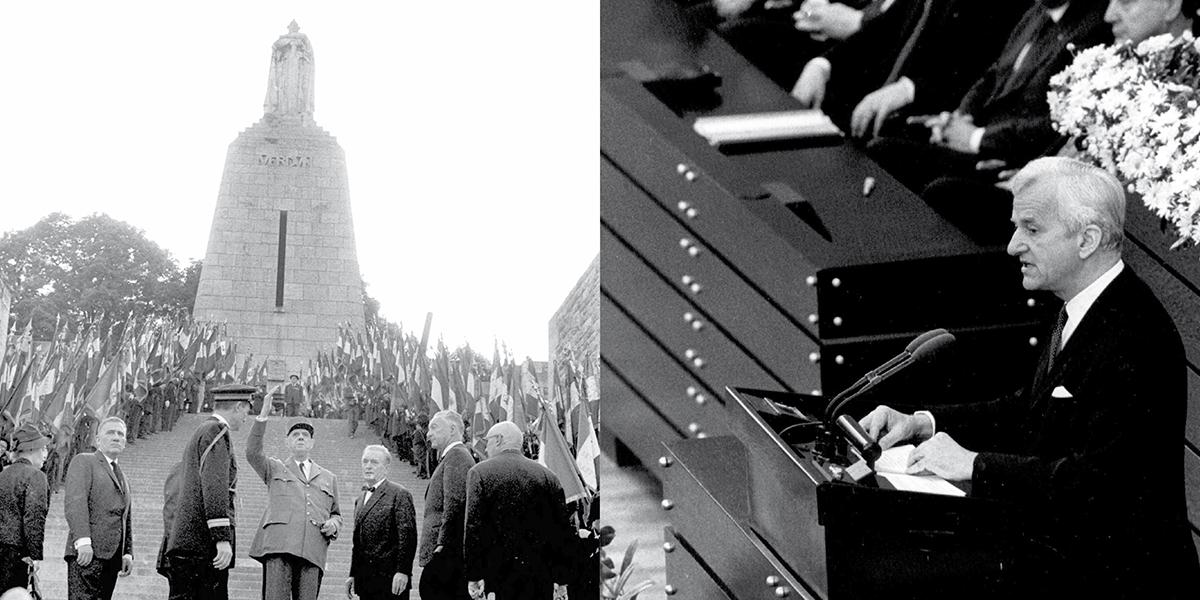The issues

Links: Präsident Charles de Gaulle, Verteidigungsminister Pierre Messmer (rechts) und der Minister für Kriegsveteranen Alexandre Sanguinetti (links) anlässlich des 50. Jahrestags der Schlacht von Verdun (Meuse). Samstag, 28. Mai 1966. © Roger-Viollet. Rechts: Der deutsche Bundespräsident Richard von Weizsäcker bei seiner viel beachteten Rede im Bundestag in Bonn am 8. Mai 1985 anlässlich des 40. Jahrestags des Endes des Zweiten Weltkriegs. © akg-images/picture-alliance/dpa
In this the 150th anniversary year of the Treaty of Frankfurt, which saw the French and German governments make a mutual undertaking to maintain the war graves on their respective territories, it is interesting to think about how remembrance policy in the two neighbouring countries came into being. Intended to create a virtuous, mobilising national narrative, in the aftermath of the Franco-Prussian War the task of remembrance was assumed by the Church, before being taken over by the State. Following the two world wars, the narrative progressively widened to include the views and demands of other stakeholders, including not only veterans’ associations but civil society as a whole.
The resulting multiplicity of remembrances leads at times to segmentation and today constitutes a genuine challenge – especially since the narrative of contemporary conflicts now embraces a complex, multilateral, Europe-wide context. Ultimately, then, the challenge for both France and Germany continues to be to make remembrance a civic project that brings citizens together.
- The birth and development of remembrance policy in France
- The birth and development of remembrance policy in Germany
- The role of the State in remembrance policy
- French society’s relationship with remembrance
- La société allemande face à son passé autoritaire
- A specific Franco-German issue: remembering contemporary conflicts in Alsace-Moselle

